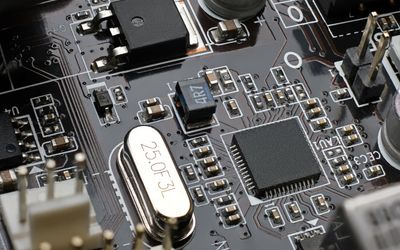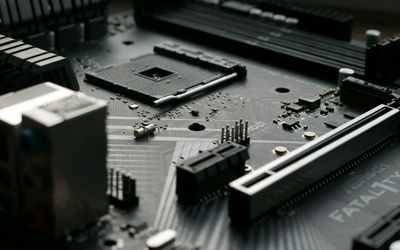Nordic Semiconductor nRF9161 Multi-Protocol Wireless Development Kit
Multi-protocol and multiband evaluation and development kit for nRF9161 SIP applications.
Technical Specifications
| Product Type | Multiprotocol Development Board |
| Programmer | Segger J-Link OB |
| Operating Voltage | 3.0 to 5.5 |
| Protocols | DECT NR+, LTE Cat M1/NB1/NB2 |
| Memory | 1MB (Flash) and 256KB RAM |
| Applications | Asset tracking, portable medical devices, smart cities, agriculture, smart metering, Industry 4.0 |
| For evaluation of | nRF9161 |
Overview
Nordic Semiconductor nRF9161 Development Kit is a comprehensive multiprotocol kit nRF9161 System-in-Package (SIP). The board features dedicated antennas for DECT NR+, NB-IoT, and LTE-M, covering various LTE bands. Hence, it supports wide-ranging applications based on DECT NR+, GNSS, and NB-IoT.
The board provides supporting tools for RF signal performance measurement, with additional support for external antennas. It’s a pre-certified single development board featuring a fully integrated Arm® Cortex®-M33 core, ideal for movement tracking applications, smart metering, predictive maintenance, and more.
Multi-Protocol Development Support
The nRF9161 development kit provides a smooth interface for the development of LTE-M, NB-IoT, DECT NR+, and GNSS-based systems. It offers support for wide ranging LTE bands including B1-B5, B8, B12, B13, B17-B20, B25, B26, B28, B65, B66 and B85 are supported. It features supporting antennas which allow it to operate at different frequencies and bandwidths, such as:
1.9 GHz NR+ ban support
700-2200 MHz LTE band support
The development board also features a nano/4FF SIM card slot along with an MFF2 SIM footprint to accommodate eSIMs. Moreover, it comes with a SIM card preloaded with free data. Additionally, there is software SIM support that reduces power consumption.
The multi-mode LTE-M/NB IoT modem comes with a pre-flashed application that allows developers to interface using AT commands. It features an intuitive application featuring several firmware samples available in the software suite.
Thanks to global operation certification, the nRF9161 development kit can be conveniently used for various wireless tracking and monitoring applications such as smart agriculture, smart cities, preventive maintenance, Industry 4.0, asset tracking, and many more.
Arduino Uno Rev3 Compatible Kit for Rapid Development
The Nordic Semiconductor nRF9161 Multi-Protocol Wireless Development Kit provides connectors for all GPIOs and interfaces. It’s compatible with Arduino Uno Rev3 boards, allowing the developers to interface with external shields and devices seamlessly. The board provides up to four user-programmable buttons and LEDs each that supports instant code development and testing without needing any external circuitry.
It features the nRF9161 fully integrated SiP featuring 64 MHz Arm Cortex-M33. It’s certified for global operation and features a dedicated programmable application. The board provides 1MB flash memory and 256 KB RAM. The board also features an on-board SEGGER J-link debugger and programmer to program and debug external targets.
Moreover, the board provides a dedicated integrated patch antenna for GNSS-built-in on the PCB. Also, it provides connectors for RF antennas for measuring RF signals and connecting external antennas with the board.
The compact device is easily portable, so it’s a convenient option for developers on the go. The board connects to a PC via a USB Type-C™ cable and can be programmed with a dedicated software suite. It allows developers to get started with prototyping and wireless development instantly. It also features the Cellular IoT Fundamentals course by Nordic Developer Academy as a learning resource for developers.
Where to find it

Mouser Electronics
Mouser Electronics is a worldwide leading authorized distributor of semiconductors and electronic components.
References
Recommended Specs
Continue Reading
Microcontroller programming is a vital skill in the realm of embedded systems development. This article aims to provide an in-depth guide to microcontroller programming and covers popular platforms, programming languages, tools, and techniques. By gaining proficiency in microcontroller programming, you can design and develop various embedded systems and create innovative solutions to real-world problems. The guide broadens your knowledge and practical experience in microcontroller programming.









